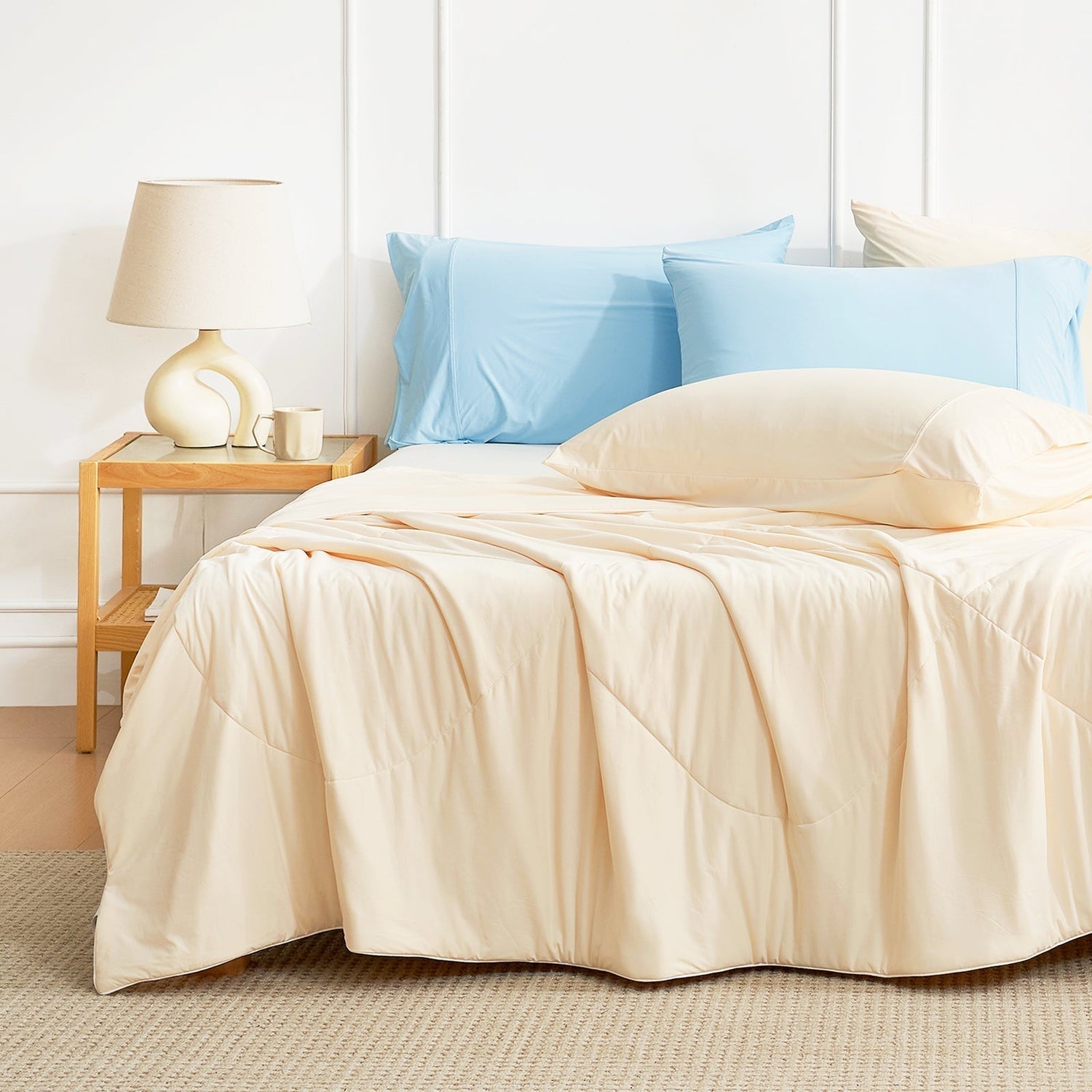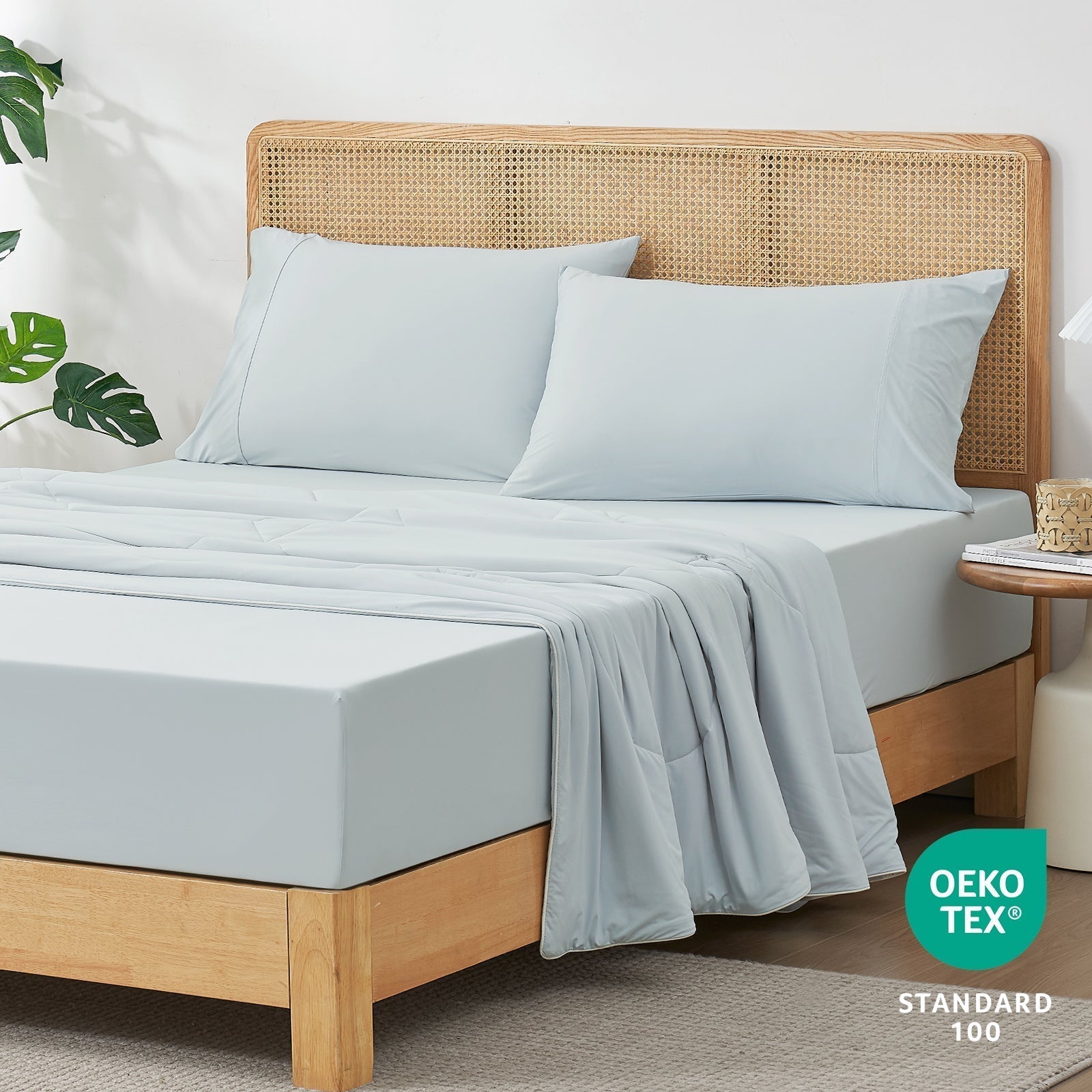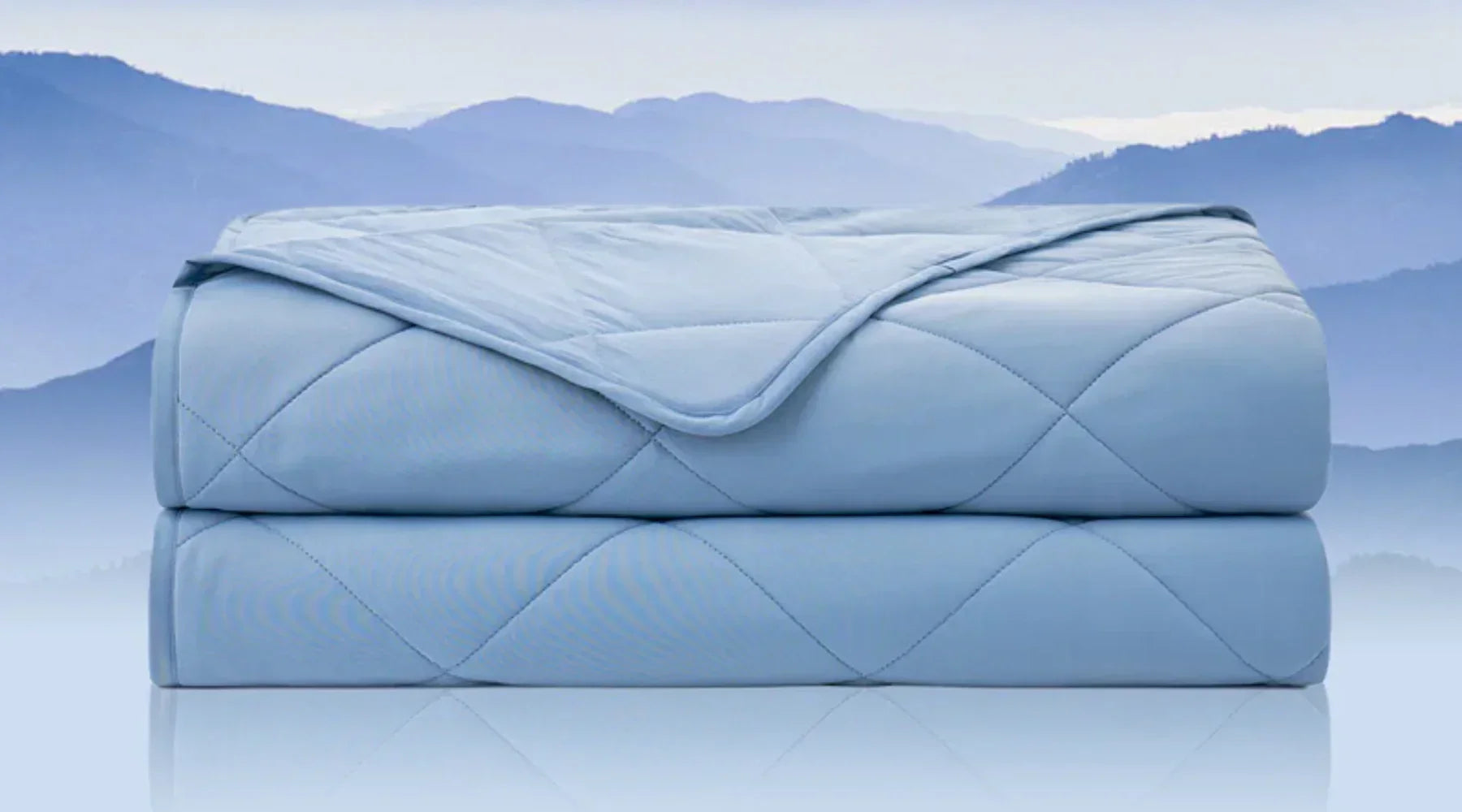We spend about a third of our lifetime in bed, therefore, it's worth taking the time to find a queen size blanket that is attractive and makes us feel good. Queen size blankets come in a wide variety of materials and weights. Some are lightweight for summertime, while others insulate us in the winter. We need to think about what feels right on our bodies, the weather of where we live, and what we need out of our bedding as we go shopping. With the right cover, we can sleep more comfortably and the bedrooms will be nicer too.
Queen Bed and Blanket Measurements
The right blanket size ensures comfort and style for our bedrooms. Queen beds require specific blanket sizes to provide sufficient coverage and maintain their neat appearance throughout the night.
Queen Mattress Dimensions
A queen-sized bed is 60 inches (152 cm) wide and 80 inches (203 cm) long. It is ideal for two people but will fit comfortably in most bedrooms. When blanket shopping, we must keep these foundation measurements in mind to cover the appropriate amount.
Ideal Blanket Sizes
Queen size blankets are typically 86-92 inches (218-234 cm) wide and 90-96 inches (229-244 cm) long. The extra size provides the necessary overhang for comfort and appearance. Different brands will have slightly different sizes—some have longer ones for taller people or wider ones for extra coverage. European queen blankets are occasionally not the same as North American sizes.
Why Proper Fit Matters
A well-fitted blanket cascades around 8-16 inches across each side of our bed. This cascade enables us to tuck in the sides or offers a stunning cascade over the edges. For couples, sufficient width puts an end to night-time blanket banditry and has both sleepers covered regardless. Too small, and there will be a struggle for covers; too large, and there will be rumpled fabrics and unsightly-looking beds. The right size means happier sleep for everyone.
Queen Size Blanket Types and Materials
Queen blankets come in a variety of materials and types to serve various functions. Having the right type of material and construction keeps us warm all year round.
Popular Blanket Materials
- Cotton blankets breathe well and are very durable. They enable air to pass through, making them ideal for hot sleepers or those who experience night sweats. Such blankets tend to soften after washing and are suitable for individuals with sensitive skin. The only drawback is that simple cotton blankets may not be warm enough in cold temperatures without additional layers.
- Wool blankets are warm yet breathable. Wool pulls moisture off our bodies and resists odor naturally. Wool will last for years if it is cared for. Some wool is harsh on sensitive skin, though, and usually needs gentle washing. Merino wool is softer but costlier.
- Down and feather blankets are light yet warm and extremely luxurious, feeling. Good down will keep going for many years with the right care. They are not suitable for allergy sufferers, though, and need to be specifically cleaned. They are also one of the most expensive options.
- Synthetic materials like polyester and microfiber are cheap and hypoallergenic. They don't wrinkle or shrink and are easy to wash. The only major problem is that they tend to make us sweat at night since they don't breathe as much as natural fibers. They also have a tendency to create static in dry conditions.
- Bamboo blankets are naturally cooling and soft to feel and greener. Bamboo blankets breathe well and repel bacteria naturally. Their drawbacks are higher prices compared to synthetic blankets and periodic special wash needs. Some bamboo products also utilize chemicals for production.
- Fleece and sherpa blankets are very warm and cozy, perfect for cold nights. They are easy to clean and dry quickly. Nevertheless, they might be too hot for others and don't breathe much. They can also cause static and might form small balls of fabric after washing.
- Faux fur blankets are soft, warm and add a touch of luxury to the bedroom. They provide good insulation in cold weather and look stylish on the bed. Like other synthetics, they may get too warm and can create static. Faux fur needs careful washing to prevent matting.
Blanket Styles and Construction
- Quilts have decorative stitching holding multiple layers together. They offer medium warmth and a distinctive look. Quilts lay flat without much bulk and work well in moderate temperatures.
- Comforters have thick filling between fabric layers for plenty of warmth in cold weather. Most have box stitching to keep the filling spread evenly. They're warm but bulky to clean.
- Duvets have a plain insert with a removable, washable cover. This lets us change covers for different seasons or looks without buying a whole new blanket. The main challenge is keeping the insert properly positioned inside the cover.
- Throw blankets are smaller than regular queen blankets and add both style and extra warmth when needed. They're perfect for naps or as an extra layer on cold nights.
- Thermal blankets have an open weave that traps warm air while staying lightweight. They provide warmth without bulk and fold up small for easy storage.
- Weighted blankets (usually 10-25 pounds) apply gentle pressure that may help reduce anxiety and improve sleep. Not everyone likes feeling the weight while sleeping, and these blankets can be warmer than regular ones.
How to Choose the Right Queen Size Blanket for You
Finding a good queen size blanket means thinking about several important factors. Here's what to consider when shopping.
Match Your Sleep Temperature
Hot sleepers need light, breathable blankets like cotton or bamboo. These materials offer cooling properties to help regulate body temperature and reduce night sweats. Cold sleepers do better with wool, down, or thicker synthetics that keep heat in. If you and your partner have different temperature needs, try using separate throws on each side of the bed.
Your sensitivity to texture matters too. Some people love soft, fuzzy materials while others find them irritating. If you have sensitive skin, smooth cotton or bamboo often works best. When possible, feel the blanket before buying or check the return policy.
Some people sleep better under heavier blankets, while others feel trapped by too much weight. Remember that weight doesn't always mean warmth—down blankets are warm but lightweight.
Choose for Your Climate
Room temperature affects what blanket works best. In cooler homes (below 68°F), choose warmer blankets like down or wool. In warmer homes (above 72°F), focus on breathable options.
Many people keep different blankets for different seasons:
- Summer: light cotton or bamboo
- Spring/Fall: medium-weight options
- Winter: heavier wool or down
A duvet with different seasonal covers can save storage space.
Know What You Can Spend
Queen size blankets range widely in price:
- Basic synthetic: $20-50
- Good cotton blends: $50-100
- Bamboo and high-end cotton: $100-200
- Wool: $100-300
- Premium down: $200-500+
Consider Your Bedroom Look
Pick colors and patterns that work with your room. Neutral colors go with everything, while bold patterns can make a statement. Think about whether you want your blanket to stand out or blend in.
Your blanket should work with your other bedding to create a pulled-together look. The blanket's texture also affects how your room feels—chunky knits look casual, while smooth blankets appear more formal.
Check Care Instructions
Different blankets have different washing needs. Cotton and synthetics usually go in the washing machine, while wool and down often need special care. Choose based on how much maintenance you're willing to do. Look for quality construction with strong stitching and well-finished edges. These details help blankets last longer.
If you have allergies, look for hypoallergenic materials like bamboo or specially treated synthetics. Down alternatives give the feel of down without triggering feather allergies.
Rest Well with Queen Size Blankets!
There are a few important things you should look for in a queen-size blanket. You should think about how warm or cool you like to sleep, the weather where you live, how much money you have, the style of your bedroom, and how much care you're willing to put into it. It's important that the blanket you choose looks good in your room, feels good against your skin, and fits your cleaning routine. If you get the right size and materials for your bed, you'll sleep better and enjoy it more.




Leave a comment
This site is protected by hCaptcha and the hCaptcha Privacy Policy and Terms of Service apply.